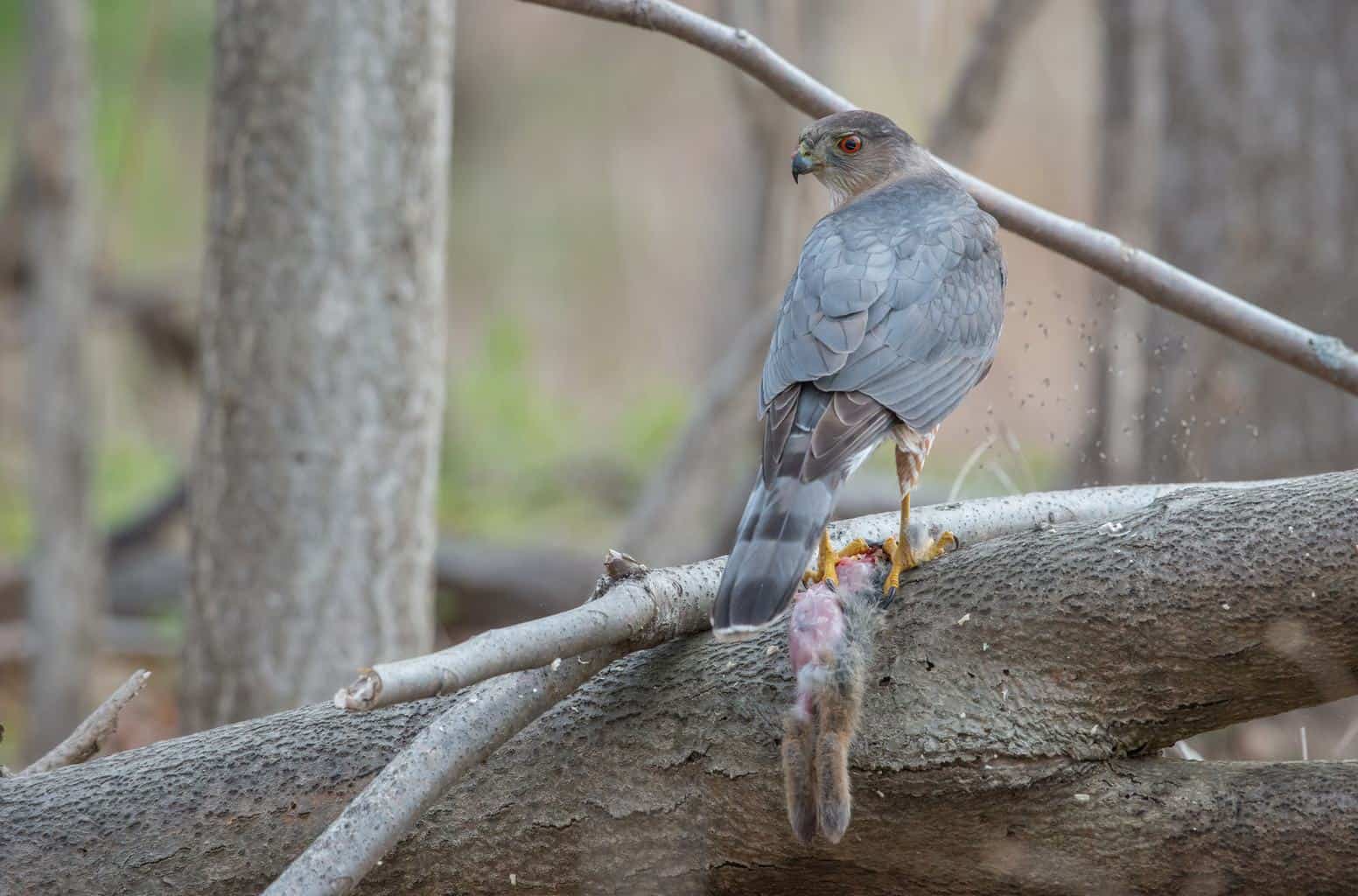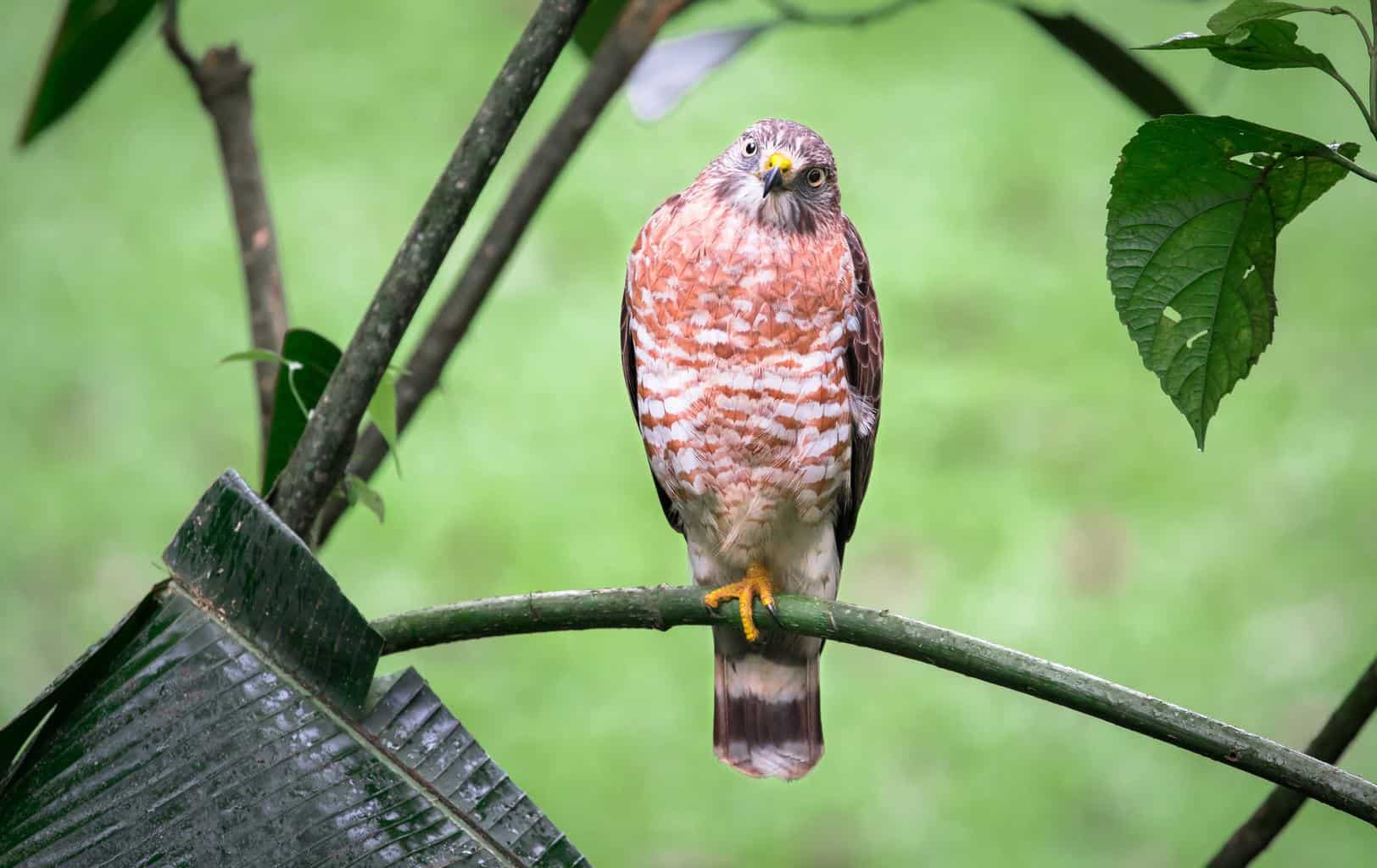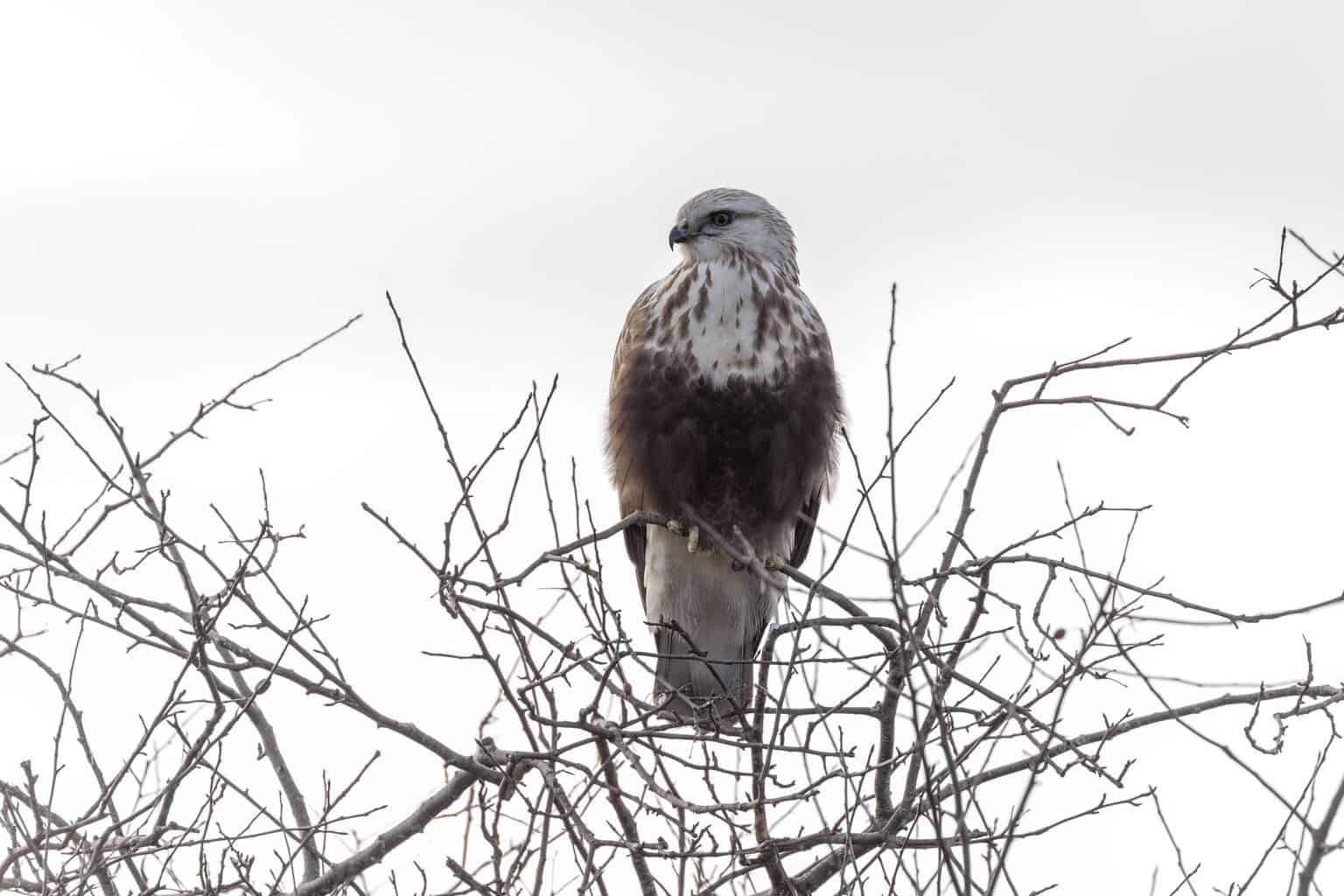Maine is located in the northeast United States, sharing borders with Canada, New Hampshire, and the Atlantic Ocean. Though not heavily populated by people, it’s overflowing with plants, animals, birds, and fish and well-preserved natural areas that locals and tourists alike are constantly exploring.
This breathtakingly beautiful state is where the Appalachian Trail ends. It also has an incomparable rocky coastline, sandy beaches, granite islands, national parks, and vast spreads of woods.
There are 58 animal species and 292 bird species, including eight types of hawks, found in Maine. While some of these hawks are rare, some can be spotted year-round if you look in the right places. Here’s a list of the hawk species that have been sighted in the breathtaking wilderness of the Pine Tree State.
Northern Harrier

- Scientific Name: Circus hudsonius
- Length: 16 – 20 inches
- Weight: 12 – 19 ounces
- Wingspan: 38 – 48 inches
The medium-sized northern harriers are mostly covered in grey feathers and sport a white rump patch. They have visibly wide wings, an extra-long tail, and flat, slightly owl-like faces.
These hawks are abundant in Maine, and you can see them in the marshes, meadows, and riverside-woodlands. Much like the owls they resemble so closely, this species depends heavily on their sense of hearing to hunt small birds, reptiles, and mammals.
This bird is North America’s only harrier species, and you can find them flying low to the ground, going back and forth over the open spaces they frequent, looking for their next meal.
Sharp-Shinned Hawk

- Scientific Name: Accipiter striatus
- Length: 9.1 – 11.8 inches
- Weight: 2.9 – 4.1 ounces
- Wingspan: 17 – 23 inches
The sharp-shinned hawk is a small bird with a plump body and a tiny head. It’s mostly blue-grey with terracotta stripes on its breast. When these birds are juveniles, they’re mostly brown with vertical streaks on their white underparts.
These hawks are skilled fliers that use a flap-and-glide style in their maneuvers. They breed in deep forests but can hunt anywhere. They mostly favor small birds and chase them quite close to the ground.
Members of this species prefer to spend their days nestled in coniferous forests and avoid open areas. While these birds are the smallest of the accipiters, they’re the most migratory, breeding in Alaska and wintering as far south as Panama.
Cooper’s Hawk

- Scientific Name: Accipiter cooperii
- Length: 14 – 18 inches (males), 17 – 20 inches (females)
- Weight: 10 ounces – 1.3 pounds
- Wingspan: 24 – 39 inches
Cooper’s hawk is roughly the size of a crow and has broad, patterned wings and a visibly long tail. It prefers living deep in the forest, but may just as well take residence in your backyard.
That’s because this species feeds mostly on small to medium-sized birds, and your backyard bird feeder is like an all-you-can-eat buffet! If you spot one of these bird-eaters around your feeders, you may want to take them down for a week or two to keep the songbirds out of harm’s way. Though birds are their first choice, these aerial foragers aren’t opposed to hunting small mammals or robbing nests.
This hawk uses a flap-flap-glide pattern as it flies, which is typical for the accipiter genus to which it belongs.
Northern Goshawk

- Scientific Name: Accipiter gentilis
- Length: 18 – 24 inches (males), 23 – 27 inches (females)
- Weight: 0.787 – 2.646 pounds
- Wingspan: 35 – 41 inches (males), 43 – 50 inches (females)
The northern goshawk is the largest of the accipiter hawks. In fact, they can grow to be as large as a goose. This bird has a massive bulky build and a mostly gray coloring. If you get close enough, you’ll see the rigorous barred pattern in its feathers.
This bird, who gets its name from the Old English word for “goose hawk,” is quite protective of its territory and its nest — even more so if there’s a fledgling in it — so if you stumble across one while out on a hike, it’s best to keep your distance from these stealthy predators.
Red-Shouldered Hawk

- Scientific Name: Buteo lineatus
- Length: 16.9 – 24.0 inches
- Weight: 17.1 – 27.3 ounces
- Wingspan: 37.0 – 43.7 inches
The red-shouldered hawk is roughly the size of a duck. It’s mostly brown, with a patterned wing and tail. The buteo hawks mainly live in the east, but they have an affinity for taking residence on islands or sea-side woodlands.
Even though they’re skilled fliers, red-shouldered hawks hunt from a lower vantage point, where they can land a reptile or a small mammal. Their diet changes with the season and region, and in some places, you’ll find the bird-eating large insects or crayfish.
Broad-Winged Hawk

- Scientific Name: Buteo platypterus
- Length: 13.4 – 17.3 inches
- Weight: 9.3 – 19.8 ounces
- Wingspan: 31.9 – 39.4 inches
It’s rather easy to spot the broad-winged hawk, thanks to its large reddish head, barred breast, and wide, contrasting bands on its tail. It has a chunky body, a short tail, and of course, broad wings. When they’re flying, you’ll probably notice these hawks’ tails coming together to a point.
These hawks are abundant from the eastern states all the way to Canada, and they’re fond of nesting on high trees with proximity to water. Both sexes come together to build a nest in the lower half of a large tree, and sometimes, they’ll reuse nests the following year.
Broad-winged hawks mostly prey on toads, frogs, and other reptiles, but they’re not especially picky; they’ll eat small birds and large insects, too.
Red-Tailed Hawk

- Scientific Name: Buteo jamaicensis
- Length: 17.7 – 22.1 inches (males), 19.7 – 25.6 inches (females)
- Weight: 24.3 – 45.9 ounces (males), 31.8 – 51.5 ounces (females)
- Wingspan: 4.9 – 52.4 inches (males), 44.9 – 52.4 inches (females)
Given the name of this species of hawks, spotting their reddish tails are the best ways to identify these birds. Red-tailed hawks are large, with females reaching the size of an eagle, and they sport broad, round wings and short, fanning tails.
Red-tailed hawks feast on a variety of small animals, so you can spot these hawks in several places, including open country, woodlands, prairies, and on roadsides. They’re also the most commonly sighted hawks in North America, so whether you’re in Maine or not, you’ll probably come across one or two of these birds.
Rough-Legged Hawk

- Scientific Name: Buteo lagopus
- Length: 18.5 – 20.5 inches
- Weight: 25.2 – 49.4 ounces
- Wingspan: 52.0 – 54.3 inches
You’ll be able to recognize the rough-legged hawk by the distinctive black patches on its wings and underbelly and mostly light grey coloring with mottled patterns on its wings and body. You’ll also be able to identify this bird by the feathers that run down its legs to its feet, a characteristic shared by only two other North American birds of prey.
These hawks’ light coloring goes with the icy lands of the arctic where they like to breed. Normally, they spend the winter season in Canada and the Northeastern states of the United States, including Maine.
Conclusion
Hawks are incredibly intelligent birds. They have exceptionally sharp vision, acute hearing, sharp claws, muscular bodies, and impressive flying skills. They also see in color and have no trouble at all catching prey mid-air; these traits make them unbeatable hunters.
They’re also among the most interesting birds to watch. Their appearance and behavior are intriguing, and to the advantage of the beginner birdwatcher, they’re not too difficult to identify. While you’re out spotting hawks in Maine, you might also want to check out the woodpeckers that live there.

